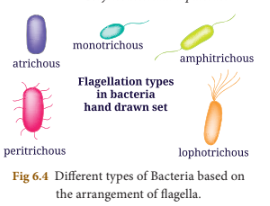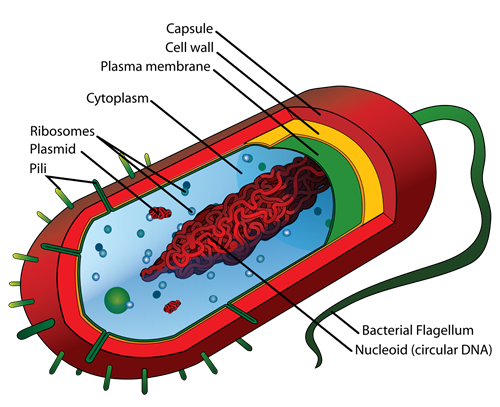PDF chapter test TRY NOW
Bacteria (bacterium - singular) are relatively simple microscopic organisms.
- Bacteria are found everywhere: in a drop of even the purest spring water, in grains of soil, in the air, on rocks, in the sands of deserts, on the ocean floor and even in oil extracted from vast depths.
- One gram of soil can contain hundreds of millions of bacteria. They live on plants, animals and in humans.
- In humans, they live in the intestines, mouth, limbs and even on the surface of the body.
They live in the ice of Antarctica at a temperature of \(- 83 °С\) and in hot springs, the temperature of which reaches \(+ 85 - 90 °С\).
Important!
Do you know?
Bacteria are the oldest group of organisms that currently exist on Earth. The first bacteria probably appeared more than 3,5 billion years ago and for almost a billion years were the only living creatures on our planet.
Bacteria types
Depending on the shape of the cell, bacteria can be of different types:
| Shape | Name |
| Spherical single | Cocci |
| Folded in a chain of cocci (Like grapes) | Streptococci |
| Clusters of cocci | Staphylococci |
Two rounded bacteria stick together Four cocci attached together Eight cocci arranged in a cuboidal fashion | Diplococci Tetrad Sarcina |
| Rod-shaped | Bacilli |
| Spiral | Spirillos |
| In the form of a comma | Vibrios |

Based on the flagella, bacteria are classified as follows:
| Name | Flagella | Example |
| Monotrichous | Single flagella at one end | Vibrio cholera |
| Lophotrichous | Bunch of flagella at one end | Pseudomonas |
| Amphitrichous | Bunch of flagella at both ends | Rhodospirillum rubrum |
| Peritrichous | Flagella all around | E.coli |
| Atrichous | No flagella | Corynebacterium diphtheriae |

Bacteria characteristics
Bacteria are very hardy and adapted to various conditions of existence:
- Some of them need atmospheric oxygen (aerobic bacteria).
- In contrast, others do not need it and can live in an oxygen-free environment (anaerobic bacteria).
- Bacteria tolerate drying, severe cold, heating, without losing viability. And bacterial spores can withstand even prolonged boiling and very long freezing.
Bacteria make their food in different ways:
- Some bacteria (Cyanobacteria) are photosynthetic and create their own food using sunlight.
- Bacteria living in anaerobic environments and harsh environments can also make their food using chemicals such as hydrogen sulphide and ammonia. This process is called chemosynthesis. Bacteria which lives inside animals and human system in a symbiotic relationship get their food from the host (ex. E.Coli).
Bacteria structure
- A single cell of a bacteria contains cytoplasm and 70S ribosomes (the only notable organelle in a bacterial cell). 70S Ribosomes help bacteria in protein synthesis.
- The nucleus is not prominent but without a nuclear membrane contains an extrachromosomal DNA generally known as a plasmid.
- The bacteria are packed well with a cell membrane and cell wall.
- Some bacteria have flagella which aids in the movement of the bacteria.

Reference:
Image credit:
Types of bacteria - Free image from Wikipedia by Mariana Ruiz LadyofHats; https://en.wikipedia.org/wiki/Bacillus_(shape)#/media/File:Bacterial_morphology_diagram.svg
Structure of a bacteria - Free image from Wikipedia by Ali Zifan; https://en.wikipedia.org/wiki/Bacteria#/media/File:Prokaryote_cell.svg
